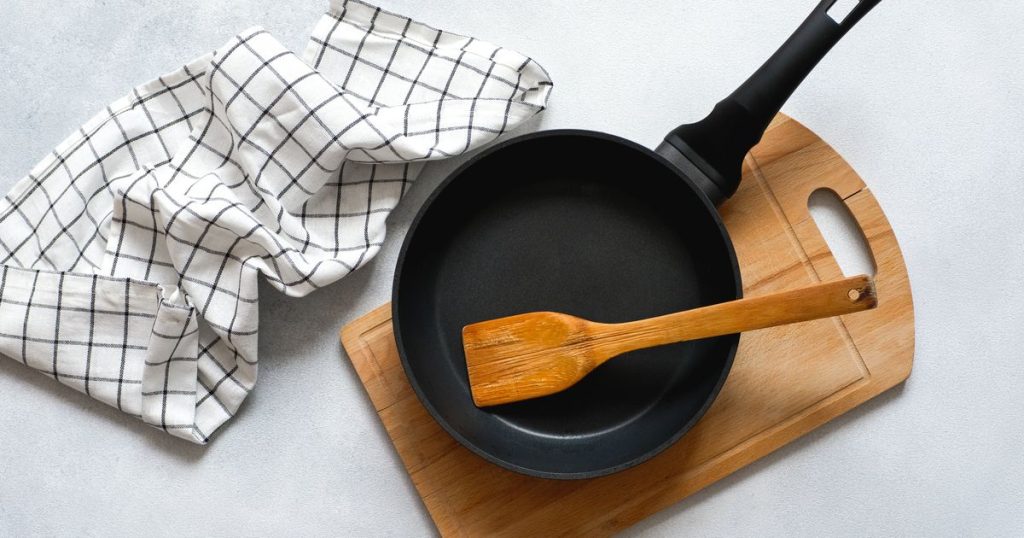My Journey with Teflon Cookware: Weighing the Risks and Benefits
When I purchased my first set of pots and pans, I made sure they were coated with Teflon. At the time, Teflon was the gold standard in nonstick cookware, and I wanted to avoid the hassle of scrubbing stuck-on food. My husband and I used our Teflon cookware happily for years until news about the dangers of Teflon began circulating in the early 2010s. Concerned about the potential health risks, I decided to replace all of it with stainless steel, cast iron, and ceramic-coated cookware. Over time, though, Teflon pans found their way back into my kitchen. They are affordable, easy to use, and convenient. But now, with four children at home, I find myself worrying about how Teflon might impact our health, especially since my new Teflon cookware is starting to show signs of wear and tear. While my husband dismisses my concerns, I decided to consult experts to settle the debate once and for all.
How Do You Even Know if You Have Teflon Cookware?
Before diving into the risks and benefits, it’s important to identify whether your cookware contains Teflon. Teflon is a brand name for a nonstick coating made from polytetrafluoroethylene (PTFE). To determine if your cookware contains Teflon, check the label for the words “Teflon” or “PTFE.” If you’ve already discarded the packaging, look for the Teflon logo stamped on the bottom of the pan. Some manufacturers, however, do not use the Teflon logo, so you may need to examine the surface. Teflon cookware typically has a smooth, shiny, dark finish. If you’re still unsure, it’s safe to assume that any nonstick cookware is likely coated with Teflon or a similar material.
The Concerns About Teflon
For years, Teflon has been surrounded by controversy due to the presence of certain chemicals, particularly perfluorooctanoic acid (PFOA), a type of polyfluoroalkyl (PFAS) known as “forever chemicals.” PFOA was used in the production of Teflon until 2013, when manufacturers phased it out due to health concerns. Research has linked PFOA exposure to several health issues, including decreased fertility, developmental delays, hormonal imbalances, and an increased risk of certain cancers. These findings led many consumers, including myself, to abandon Teflon cookware altogether.
However, modern Teflon cookware is different. After 2013, manufacturers began using alternative chemicals, such as short-chain PFAS, which are believed to be less harmful and remain in the body for shorter periods. According to experts like David Nadler, a research assistant professor at the New York Institute of Technology, the risks associated with modern Teflon cookware are minimal when used properly. However, this doesn’t mean Teflon is entirely risk-free. Proper use and maintenance are crucial to minimizing potential health risks.
Is Teflon Still Dangerous?
The answer to this question depends on how you use your Teflon cookware. Modern Teflon cookware is safer than its predecessors, but there are still precautions you should take. The primary risks come from heating Teflon to extremely high temperatures or using cookware that is chipped or scratched. When Teflon is heated to temperatures above 500 degrees Fahrenheit, it can release toxic fumes, a phenomenon known as “Teflon flu.” These fumes can cause symptoms like headaches, fatigue, and flu-like symptoms in humans, and they can even be fatal to pet birds.
To avoid these risks, it’s essential to follow proper usage guidelines. Jamie Alan, an associate professor of pharmacology and toxicology at Michigan State University, recommends keeping the heat as low as possible when cooking with Teflon and avoiding empty pans, which can rapidly reach dangerous temperatures. Additionally, scratched or chipped Teflon cookware should be replaced immediately, as the damaged areas can release harmful chemicals into your food. While modern Teflon cookware is generally considered safe, it’s important to remain vigilant about its condition and usage.
How Can You Minimize the Risks of Using Teflon?
If you choose to continue using Teflon cookware, there are several steps you can take to minimize potential risks. First, never heat Teflon cookware to extreme temperatures. Stick to low or medium heat for most cooking tasks, and avoid leaving empty pans on the stove. Second, avoid using metal utensils or abrasive cleaners, as these can scratch the Teflon coating. Instead, opt for silicone, wood, or plastic utensils, and clean the cookware gently with mild soap and water. Finally, replace your Teflon cookware regularly. While it can last for about five years with proper care, it should be replaced sooner if it shows visible signs of wear, such as chips, cracks, or discoloration.
By taking these precautions, you can enjoy the convenience of Teflon cookware while reducing its potential risks to your health. According to experts, the risks associated with modern Teflon are relatively low compared to other sources of PFAS exposure, such as contaminated drinking water or certain consumer products. However, it’s still important to approach its use with caution, especially if you have children or pets in the house.
Expert Consensus: Weighing the Pros and Cons
The debate over Teflon cookware continues, but most experts agree that modern Teflon is much safer than its older counterparts. While it’s true that Teflon cookware contains chemicals that can potentially harm human health, the risks are minimal when the cookware is used and maintained properly. Teflon’s nonstick surface offers several advantages over other types of cookware, including easier cleanup, reduced oil consumption, and better food release. Additionally, Teflon cookware is often more affordable than alternatives like ceramic-coated or high-end stainless steel pans.
That said, there are still valid reasons to be cautious. Teflon cookware is not as durable as stainless steel or cast iron, and it requires more careful handling to maintain its nonstick properties. Moreover, while the risks of PFOA exposure have been significantly reduced, the long-term effects of exposure to short-chain PFAS are still being studied. If you’re particularly concerned about chemical exposure, you may want to consider alternative cookware options, such as ceramic or enameled cast iron, which are free from PFAS.
Conclusion: Making an Informed Decision
Ultimately, whether or not to use Teflon cookware comes down to your personal comfort level and priorities. If convenience, affordability, and ease of use are most important to you, modern Teflon cookware can be a practical choice—as long as you follow proper usage and maintenance guidelines. However, if you’re particularly sensitive to chemical exposure or prefer more durable cookware, you may want to explore alternatives.
For my part, I’ve decided to continue using my Teflon cookware, but with caution. I make sure to keep the heat low, avoid scratching the surface, and replace the pans as soon as they show signs of wear. While the risks are minimal, I feel better knowing that I’m taking steps to protect my family’s health. By staying informed and taking responsibility for how we use Teflon, we can enjoy its benefits without compromising our well-being.














